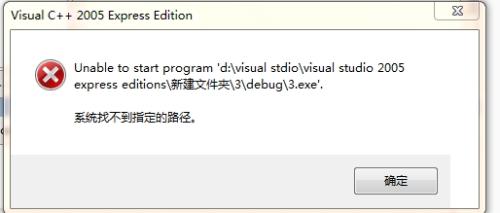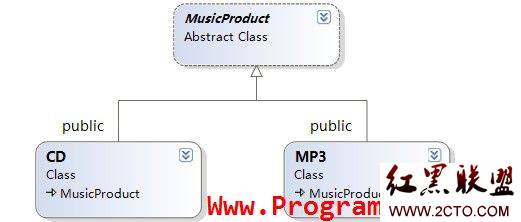一个C++中智能指针的设计
在C++中,智能指针是存储一些动态分配对象或者资源的类,主要用于控制资源或者动态对象的使用生存期,设计的目的如下:
保证能够正确的分配和销毁动态对象或者资源,以防止内存泄露等问题。
跟踪对象或者资源的使用情况。
智能指针的实现一般都是使用引用计数,将一个计数器与使用的指针相关联起来,此时引用计数器跟踪该所属类有外部多少共享。因此在实现的时候,就有两个根本的部分
计数表示。用于实现对动态对象或者资源使用的计数。
指针表示。用于将动态对象或者资源的指针使用间接表现。
根据智能指针主要是上面两大部分,智能指针可以称为“智能计数指针”,智能主要是计数的意思,当然计数的用途就因应用而不同了,或者只是为了跟踪,或者是为了资源管理,或者是为了防止多次释放等等。
一,智能指针实现
下面的模板类,用于实现对指针的封装,其实现的功能如下:
指针构造。根据需要被封装的动态对象或者资源的指针,构造智能指针,一般在构造时,会将资源的计数加1;
指针运算符重载。下面重载了*,=,->等运算符。
指针数据。一个指向模板类型的指针,T* ptr_
[cpp]
template <class T>
class scoped_refptr {
public:
scoped_refptr() : ptr_(NULL) {
}
scoped_refptr(T* p) : ptr_(p) {
if (ptr_)
ptr_->AddRef();
}
scoped_refptr(const scoped_refptr<T>& r) : ptr_(r.ptr_) {
if (ptr_)
ptr_->AddRef();
}
template <typename U>
scoped_refptr(const scoped_refptr<U>& r) : ptr_(r.get()) {
if (ptr_)
ptr_->AddRef();
}
~scoped_refptr() {
if (ptr_)
ptr_->Release();
}
T* get() const { return ptr_; }
operator T*() const { return ptr_; }
T* operator->() const { return ptr_; }
T* release() {
T* retVal = ptr_;
ptr_ = NULL;
return retVal;
}
scoped_refptr<T>& operator=(T* p) {
// AddRef first so that self assignment should work
if (p)
p->AddRef();
if (ptr_ )
ptr_ ->Release();
ptr_ = p;
return *this;
}
scoped_refptr<T>& operator=(const scoped_refptr<T>& r) {
return *this = r.ptr_;
}
template <typename U>
scoped_refptr<T>& operator=(const scoped_refptr<U>& r) {
return *this = r.get();
}
void swap(T** pp) {
T* p = ptr_;
ptr_ = *pp;
*pp = p;
}
void swap(scoped_refptr<T>& r) {
swap(&r.ptr_);
}
protected:
T* ptr_;
};
有了这个类之后,我们可以定义一个指针,如针对class window的智能指针
[cpp]
scoped_refptr<window> win;
此时,上面的模板就会包含一个window *ptr_的指针,从上面可以看出,为了能够正常工作,这类型的指针都必须要实现AddRef和Release方法,这应该不会是要求在class window中实现的吧?那也不太不符合封装的正常逻辑了。答案是:当然不会在class window中实现,这两个方法主要是针对计数的方法,专门针对class window封装一个计数器类,下面的计数器封装
二,计数器的封装
这个类很简单,有三个地方需要注意
类从模板类型继承,就是从T继承。上面的class window的话,就是RefCountedObject是window的派生类。
封装计数器ref_count_。需要注意的是,对计数器的加减操作应该尽可能的保持原子性。
计数器类提供多个构造函数,都是对传入的类型T的多种构造支持。
[cpp]
template <class T>
class RefCountedObject : public T {
public:
RefCountedObject() : ref_count_(0) {
}
template<typename P>
explicit RefCountedObject(P p) : T(p), ref_count_(0) {
}
template<typename P1, typename P2>
RefCountedObject(P1 p1, P2 p2) : T(p1, p2), ref_count_(0) {
}
template<typename P1, typename P2, typename P3>
RefCountedObject(P1 p1, P2 p2, P3 p3) : T(p1, p2, p3), ref_count_(0) {
}
template<typename P1, typename P2, typename P3, typename P4>
RefCountedObject(P1 p1, P2 p2, P3 p3, P4 p4)
: T(p1, p2, p3, p4), ref_count_(0) {
}
template<typename P1, typename P2, typename P3, typename P4, typename P5>
RefCountedObject(P1 p1, P2 p2, P3 p3, P4 p4, P5 p5)
: T(p1, p2, p3, p4, p5), ref_count_(0) {
}
virtual ~RefCountedObject() {
}
virtual int AddRef() {
return Increment(&ref_count_);
}
virtual int Release() {
int count = Decrement(&ref_count_);
if (!count) {
delete this;
}
return count;
}
protected:
int ref_count_;
};
三,实例
[cpp]
scoped_refptr<Window> win(new RefCountedObject<Window>(&client, &wnd));
上面的实例定义了一个智能指针win,式中client和wnd为其它参数,与定义无关。
补充:软件开发 , C++ ,




